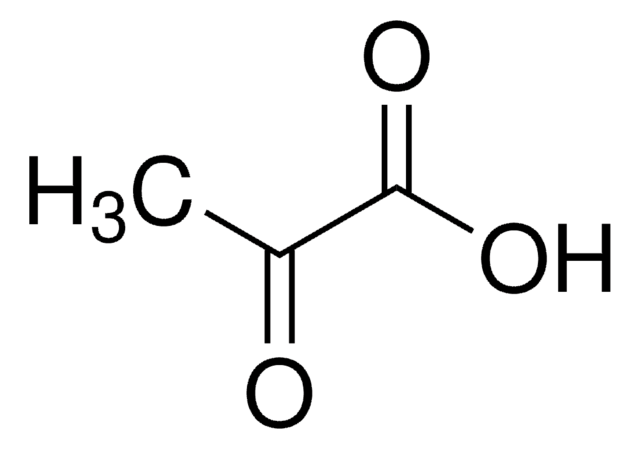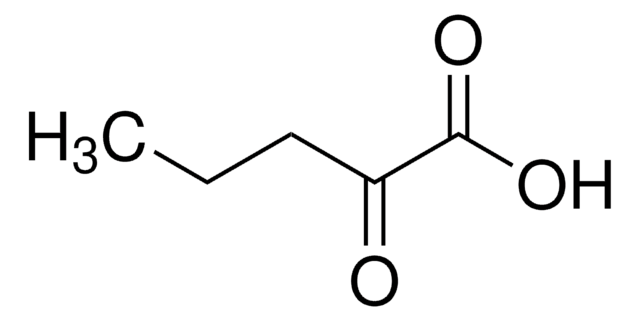286958
Phenylpyruvic acid
98%
Synonym(s):
2-Oxo-3-phenylpropanoic acid, 2-Oxo-3-phenylpropionic acid
About This Item
Recommended Products
assay
98%
mp
150-154 °C (lit.)
functional group
carboxylic acid
ketone
phenyl
storage temp.
−20°C
SMILES string
OC(=O)C(=O)Cc1ccccc1
InChI
1S/C9H8O3/c10-8(9(11)12)6-7-4-2-1-3-5-7/h1-5H,6H2,(H,11,12)
InChI key
BTNMPGBKDVTSJY-UHFFFAOYSA-N
Looking for similar products? Visit Product Comparison Guide
Storage Class
11 - Combustible Solids
wgk_germany
WGK 3
flash_point_f
Not applicable
flash_point_c
Not applicable
ppe
Eyeshields, Gloves, type N95 (US)
Choose from one of the most recent versions:
Already Own This Product?
Find documentation for the products that you have recently purchased in the Document Library.
Customers Also Viewed
Our team of scientists has experience in all areas of research including Life Science, Material Science, Chemical Synthesis, Chromatography, Analytical and many others.
Contact Technical Service











